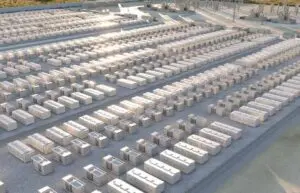Australian long duration energy storage contender Redflow says it has a bigger, better “next generation” zinc bromide flow battery in the works that will be competitive with all large-scale battery technologies on the market, including lithium.
Speaking to investors at a quarterly briefing on Tuesday, Redflow’s new chief CFO Michael Hipwood said an update of its four-year “path to profitability plan” – due to be published in mid-March – would include a roadmap for delivery of the new “X10” battery system as well as for a manufacturing ramp-up that could include a new factory on home soil.
“We’ll look at the viability of onshoring manufacturing back to Australia … and possibly also a factory in the US to comply with IRA legislation,” Hipwood said, referring to President Biden’s clean energy boosting Inflation Reduction Act.
Redflow, which on Tuesday flagged an expected loss of around $14 million for the first half of the 2024 financial year, has had some significant wins in the US market since the introduction of the IRA, including being tapped by the California Energy Committee to supply 15.4MWh of batteries for a microgrid project.
The Brisbane-based company is also in talks to supply 34MWh of battery storage to the US Department of Energy for the Valley Children’s Hospital, with final contracting set to be finalised in the first half of the 2025-26 financial year.
“We think the opportunity … in front of us is significant, you know; 55 megawatt-hours of opportunity that we’ve been shortlisted for,” said CEO Tim Harris during the webcast briefing.
“We are the only Australian company that has got projects with the CEC (California Energy Commission). We’re the only Australian company that’s got a project with the US DOE long duration energy storage program. And that’s a great place for us to be – it gives us visibility.”
Despite these wins, Redflow continues on a bumpy road to success, with Harris acknowledging “a bit of a frustrating experience for investors over the last quarter,” as supplier quality challenges materially, now said to be resolved, took a toll on production at the company’s Thailand factory.
But Harris says the company’s newly refreshed executive team is “thinking long-term” and and has invested its “scarce resources” into thinking long-term and coming up with a solution that will help Redflow to compete in a market focused on batteries that can store tens and hundreds of megawatt-hours of energy for up to 12 hours at a time.
A solution he says was set in motion “literally this week.”
“Our key focus is making sure that we can have the best value proposition that we possibly can around that kind of six to 12 hour [of storage] mark,” Harris said.
“We know that the next big leap is we move into a much larger battery facility and introduce a modern automation …into our tech, into our battery in parallel … this kind of x10 concept where we can make something bigger, better, more aligned to automation that actually starts to remove, significantly, some costs that we have in the battery industry; that bigger form factor.
“And so that kind of step change is something that we’re actually focused on as well.”
Harris says Redflow’s key advantages around environmental footprint, safety and low cost of deployment for its ZBM batteries versus other solutions in the market gives the company a “really strong” value proposition in the burgeoning long duration storage market.
“As we start to target some of those multi-megawatt-hour, even potentially hundreds of megawatt-hour options, our ability to create a step change in a cost that meets these customers’ … target price … is a clear line of sight that we have,” he says.
“And we’re going through that process of validating that and that’s just going to open up the market for us … tremendously
“As we start to grow and drive scale into our business, we know that we can be competitive at the kind of six to 12 hour mark.”
“The next element is just relentless execution,” Harris adds.
“We want to leapfrog where we are in Thailand and look for that kind of next scale of manufacturing because we are confident that demand is there.”
Harris says that the company’s Thailand plant is on track to reach a production level of 40MWh a year in the second half of this calendar year, but could probably be stretched to double that – 80MWh once some automation is brought into play.










